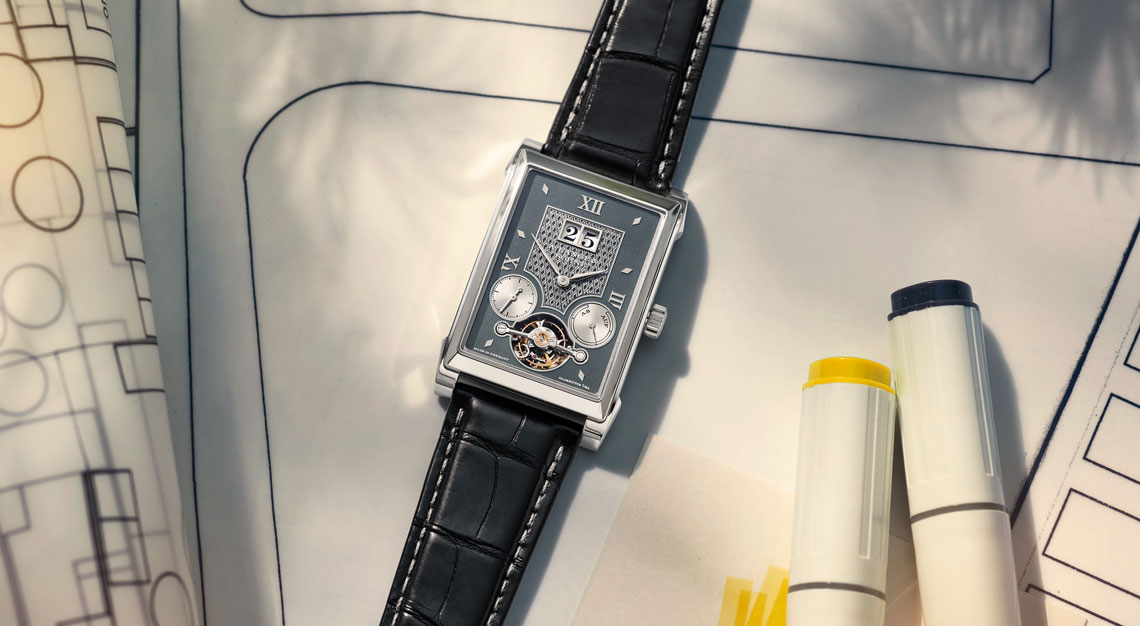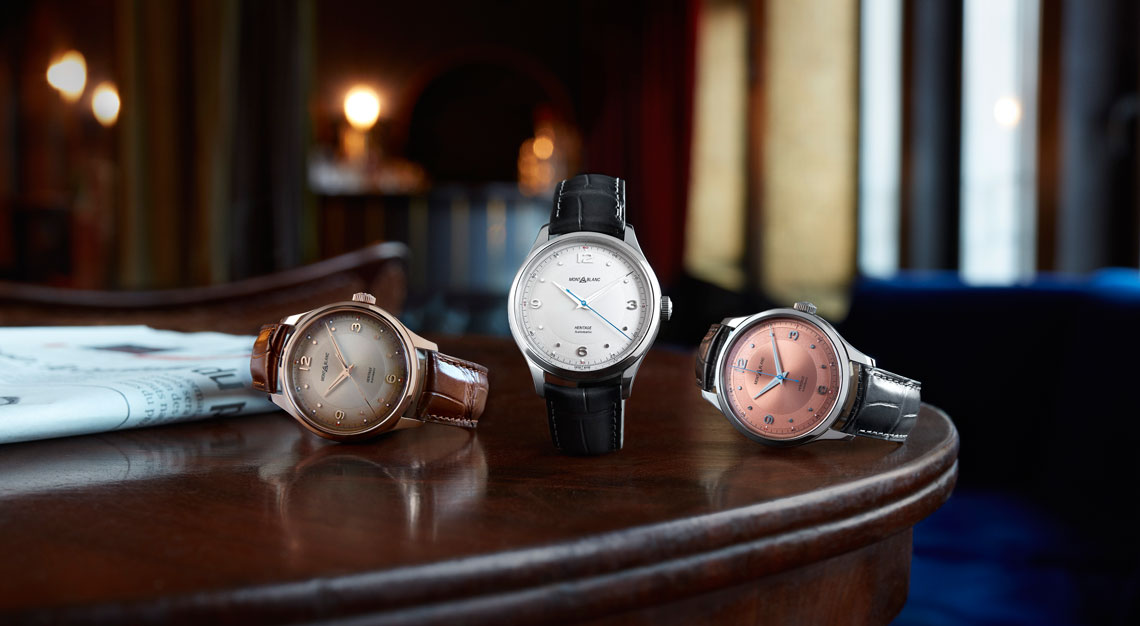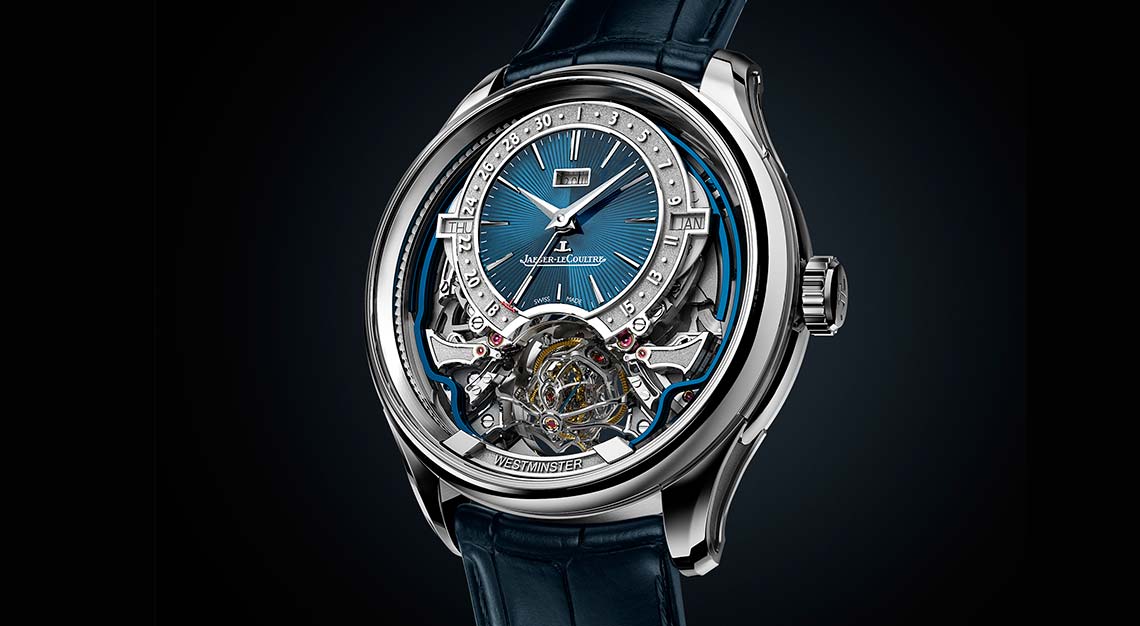It may very well be the most accurate perpetual display of time ever achieved by the Grande Maison
With an arsenal of celestial complications such as the radically complex Reverso Quadriptyque and stellar complications such as the Master Grande Tradition Répétition Minutes Perpétuelle, Jaeger-LeCoultre has pushed the boundaries of precision timekeeping well into stratospheric heights.
Driven by its eternal quest for chronometry – and an unquenchable thirst to unravel the mysteries of our universe – the Grande Maison dedicates its horological pursuits of 2022 towards the cosmos. After all, as Dominique Fléchon writes in his compendium of celestial complications, what is horology but a child of astronomy?
Setting off on an epic Stellar Odyssey, Jaeger-LeCoultre means to pay homage to the celestial events that had inspired its founders so. The Vallée de Joux’s naturally crisp, clear night skies and serene ambience were most ideal for observing the stars and other astronomical phenomena.
This closeness with the cosmos kept Jaeger-LeCoultre’s watchmakers perpetually fascinated, and to this day it continues to enthral the manufacture and animate its many collections in ever livelier ways. Leading the conversation this year is the Jaeger-LeCoultre Atmos Hybris Mechanica Calibre 590, an objet d’art par excellence that brings an entirely new dimension to Atmos, the world’s only clock that literally runs on thin air.
Stars and planets align
That it is the latest timepiece in the Hybris Mechanica collection, which represents the pinnacle of Jaeger-LeCoultre high watchmaking, should tell you that this is no ordinary Atmos clock.
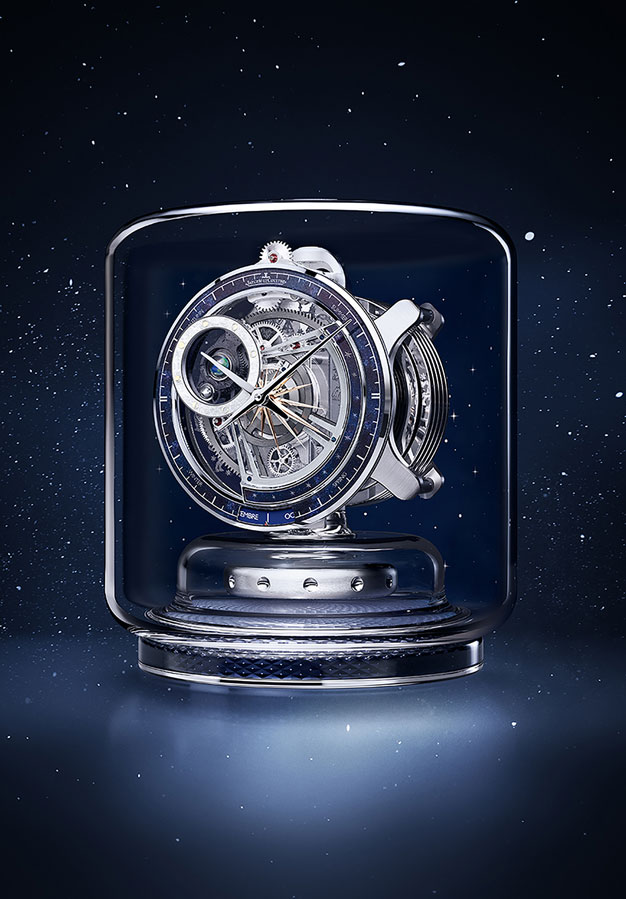
Comprises 443 individual components including a fully functioning three-dimensional tellurion display, this breath-taking table clock reproduces with utmost precision the rotation of Earth on its own axis, as well as the orbits of the Moon around Earth, and finally Earth around the Sun. This depiction of Earth, Moon, and Sun is known as a tellurion (sometimes spelled tellurium).
It is also a perpetual calendar although it displays only the longer periodic cycles such as month, seasons, zodiacs, and moon phases. The latter is a complication that Jaeger-LeCoultre has taken well beyond any realm imaginable by other haute horlogerie manufactures. Recall 2021’s Reverso Quadriptyque which features not one, not two, but four different moon displays.
Moon magic
With Atmos Hybris Mechanica Calibre 590, the manufacture has succeeded in creating the most accurate moon phase display ever in a Jaeger-LeCoultre timepiece. Dethroning the Duomètre Sphérotourbillon Moon which is now in second place, Atmos Hybris Mechanica Calibre 590 is so accurate it creates only one day of error in 5,770 years – versus 3,887 for the Duomètre.
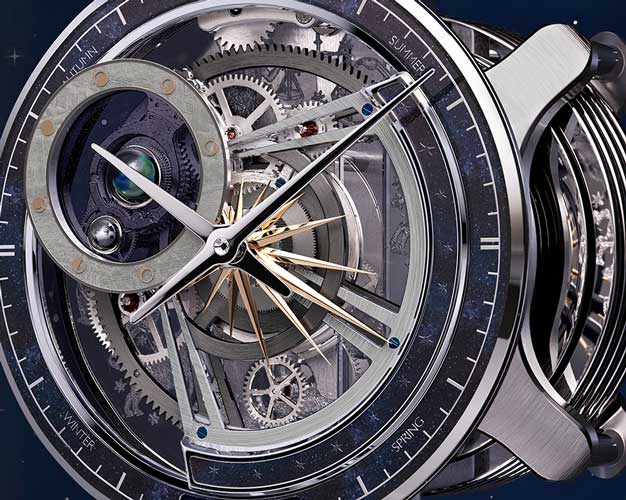
Crafted with a photo-realistic effect, the Moon joins Earth in its orbit around the Sun, represented by a burst of polished golden metal rays at the centre of the clock. Indicating the seasons as it goes, this cosmic journey is completed once every 365.2466 days. Compared to the reference value of 365.2425 days as provided by the Gregorian calendar, and barring seasonal change, the Atmos Hybris Mechanica Calibre 590 will not need adjusting until the year 2412.
Essentially the most complicated Atmos clock in the history of Atmos clocks, this 10-piece limited edition is naturally adorned with traditional handcrafts from Jaeger-LeCoultre’s famous Métiers Rares atelier. The spherical Earth brims with life thanks to miniature painting, while laser engraving evokes the surfaces of the Moon. Lacquer offers a rich glow to the main dial ring and most aptly meteorite is inlaid on the Earth-Moon ring.
Infinite wonder
Truly, the Atmos is a consummate marriage of art and science, with or without a built-in tellurion. Almost defying the laws of physics, it subsists entirely on changes in atmospheric temperature. On thin air, if you will. This fascinating clock is so energy efficient that it would take 60 million Atmos clocks to consume the same amount of energy as a single 15-watt incandescent light bulb.
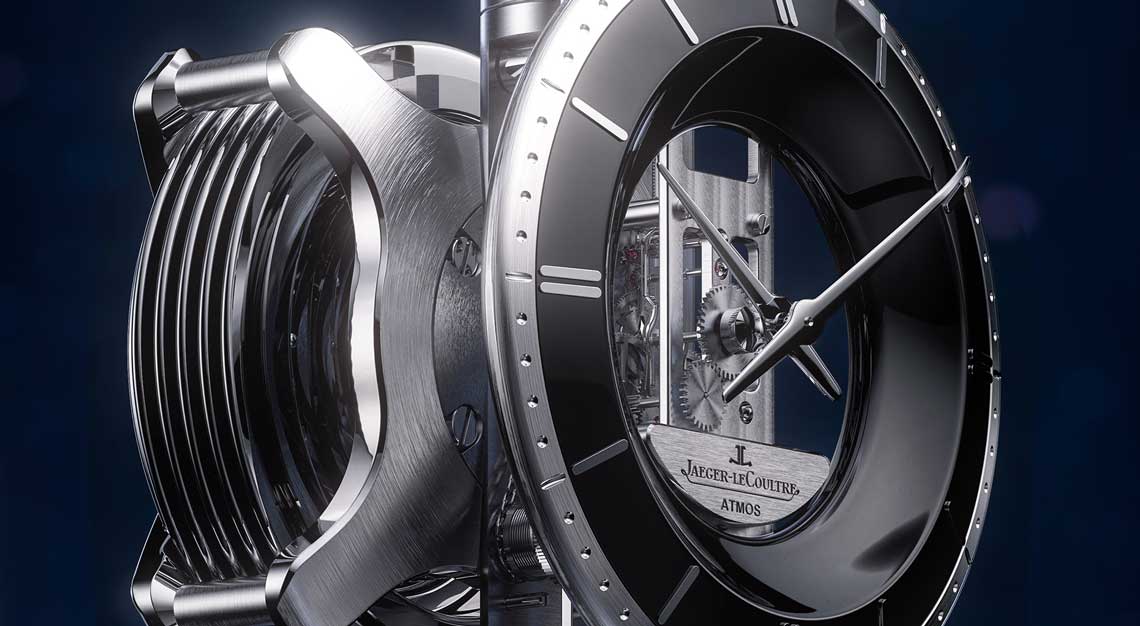
Yet all it requires is a hermetically sealed, gas-filled capsule connected to the clock’s drive spring by a membrane, and it’s set for life. The slightest temperature variation changes the volume of the gas, causing the membrane to ‘breathe’ like the bellows of an accordion, and wind the spring. A temperature fluctuation of just one degree Celsius is enough to give the clock with an operating autonomy of about two days,
Created by the Swiss engineer Jean-Léon Reutter more than nine decades ago in 1928, and Jaeger-LeCoultre has been a part of the Atmos story since 1935. As the manufacture writes a new, modern chapter of this incredible timepiece, it revealed a fresh new design for the clock, one that sets it far apart from the ornately gilded models of the 20th century.
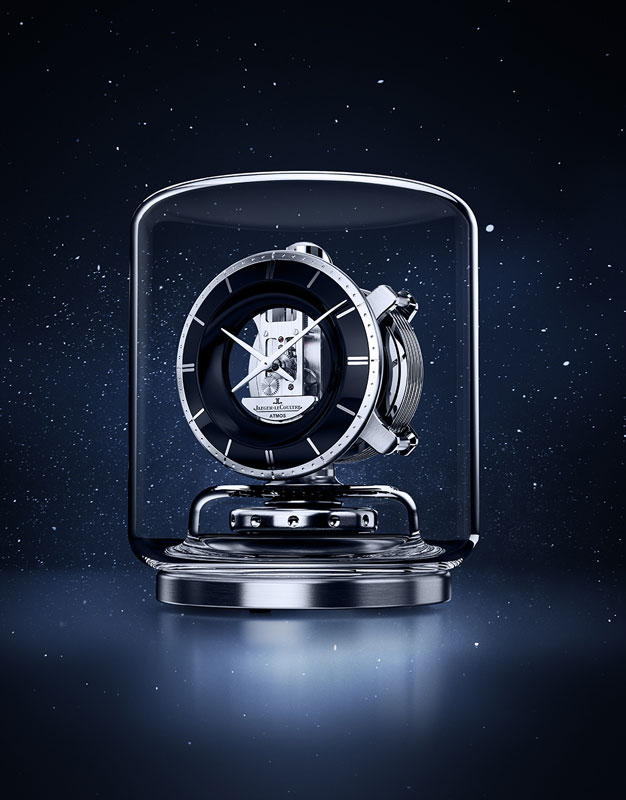
Meet Atmos Infinite, a contemporary work of timekeeping art that celebrates exceptional transparency and purity of line. This updated model embodies the manufacture’s vision for the Atmos clock in the 21st century. With a cylindrical sapphire glass cabinet elegantly sloping around the edges, it offers a refreshing aesthetic while also referencing the rounded glass domes of the earliest Atmos models.
“The aesthetic of the Atmos is defined by the distinctive shape of its movement. With its complete absence of visual distraction, the seamless glass cabinet gives full value to the Atmos mechanism, which appears to float freely within it,” explains Lionel Favre, Jaeger-LeCoultre design director.
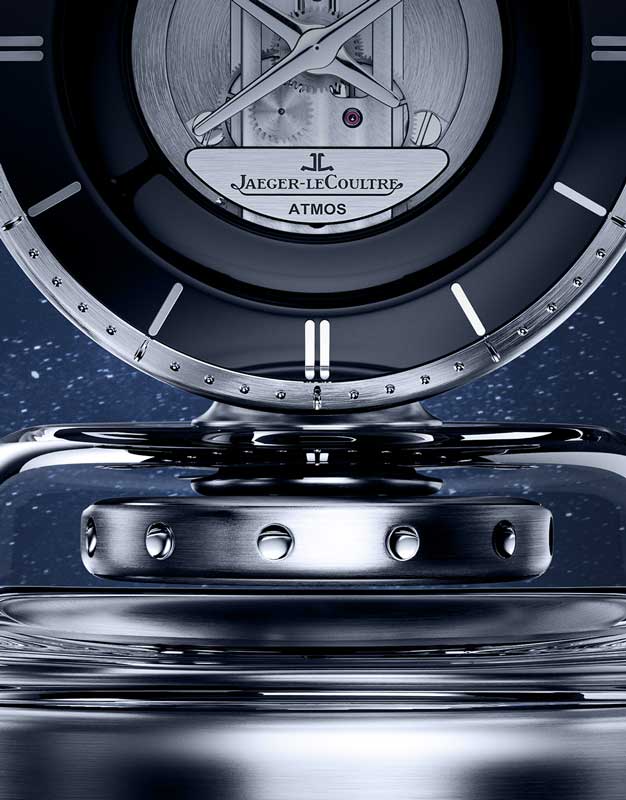
Both Atmos Hybris Mechanica Calibre 590 and Atmos Infinite with its Calibre 570 were crafted with glass supports designed to be virtually invisible, so as to allow 360-degree views of the inner mechanisms. A system of bellows, chains and gears, not forgetting the all-important torsion pendulum, appears suspended in mid-air, fuelling our imaginations and evoking fantastical dreams about voyages to the Moon and back.
Find out more online at Jaeger-LeCoultre.

